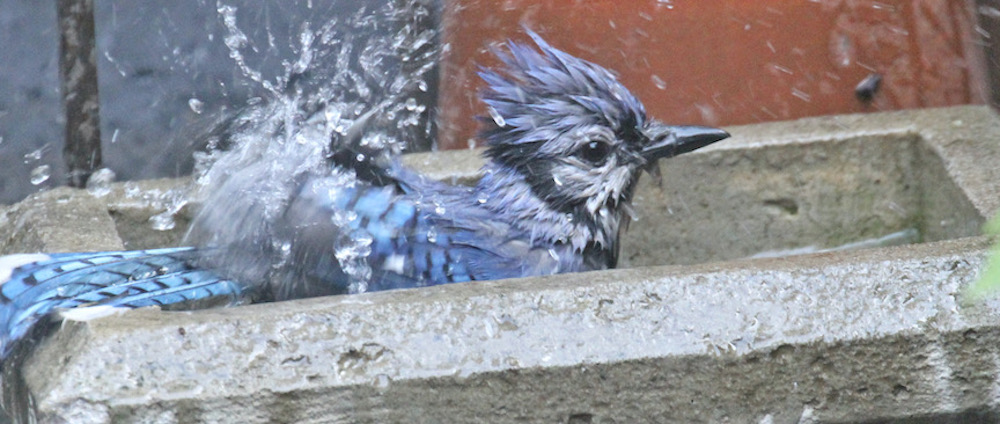Yesterday was National Peanut Day 2017; and because the holiday shared the spotlight with the celebration of Uncle Sam Day, I didn't cover it in my blog post at that time. I focused on reporting facts re Sam's day of honor; and if you'd like to refer to this particular entry, please click here.
Today's post is dedicated to the 2017 National Peanut Holiday, which means I'm not throwing too far back on this Throwback Thursday. Besides Uncle Sam's Day always coincides with the celebration of National Peanut Day.
Last year, on September 13th 2017, I published an entry on National Peanut Day; and on the following day, September 14th 2016, I published a post which discussed Uncle Sam's Day.
Therefore, this year I'm doing the reverse in terms of publishing entries re these two holidays. As I said, Uncle Sam's posting was on his official day which was yesterday, and today, a belated offering to National Peanut Day is being made.
The young cardinal pictured atop this entry can be seen enjoying peanuts from a wreath-style whole peanut bird feeder which hangs in my urban garden.
This past Friday (here on Blogger) I published an entry about young cardinals, in which I referenced an article that states the following:
"All northern cardinal hatchlings are born with pink skin and grayish scaling. No red is evident in either the male or females. As molting begins, however, baby cardinals take on a tan hue that remains well into their juvenile period, when color changes in the male begin to differentiate the two genders. Also, baby beaks are uniformly black and fade to a coral red through the molting period."
Harkins goes on to explain that "When juvenile northern cardinals grow their feathers in the fall, their gray and tan tones slowly change to mottled light browns and soft reds. Red grows faintly into the tail and wing feathers of both genders, but only the males show bold uniformity in the red that grows into the main torso and head feathers. Females will grow mostly light brown or grayish feathers in these areas. Both genders of juvenile will develop black masks around mostly black beaks during this period."
In any event, the photographs of my visiting young cardinal (that are featured below) truly illustrate the physical features of a young cardinal's features which the article's author (Dan Harkins) describes.
The latter image features the young cardinal sharing my peanut feeder with a couple of house sparrows.
"Because peanuts are high in fat, they are an excellent source of energy and calories, especially during cold winters, and they're ideal for birds to tuck away and store for another day. No matter what types of peanuts or peanut products you feed your backyard birds, you’re actually offering them a very nutritional treat," claims The Spruce.
And, as I've mentioned in a recent post, young blue jays, enjoy this legume too. I think if it were up to them, a holiday such as National Peanut Day would be a daily occurrence, which, dear reader, you might also surmise upon seeing the next set of pictures.
Another bird type to visit my wreath-style feeder, and to enjoy peanuts from there, is the downy woodpecker as evidenced below.

It seems this bird would also like National Peanut Day to be a daily observation, and when it comes to feeding birds in my rooftop garden, I try to honor their apparent wishes and keep my peanut feeders replenished. I'm not that altruistic, their joy in procuring a peanut at my place, is nothing compared to the awe I experience in seeing them do this.
Happy Belated National Peanut Day, dear reader!



















No comments:
Post a Comment
Note: Only a member of this blog may post a comment.